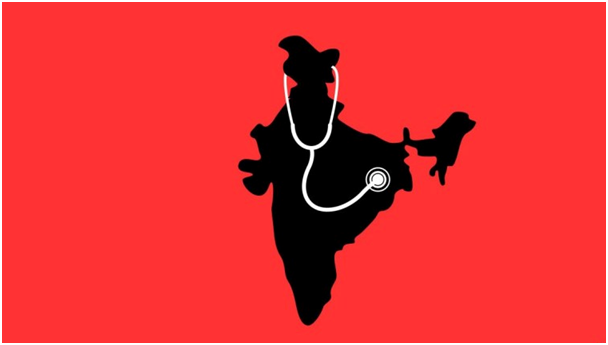
Healthcare in India is one of the country’s fast growing and improving sectors. With new vision of making India medically incredible, providing standardized care, and saving a higher rank in the global medical market, the government has provisioned Rs 69,000 crores to the sector. Its massive and continuously-growing manpower and infrastructure have contributed to making it one of the largest sectors of India in terms of revenue and employment.
The Indian healthcare delivery system is categorized into two components – public i.e. government-run and private. Public healthcare institutions operate mostly in rural areas and are more focused on Primary Healthcare Centers (PHCs). Meanwhile, the private healthcare institutions are concentrated in urban cities and offer secondary, tertiary and quaternary care.
Advancing Healthcare in India
The healthcare sector of India is not wary of challenges. But despite the setbacks, it has progressed to become a popular medical tourism destination. The medical market is growing at a stupendous rate of 18% per year. With this rate, it is expected to touch down $280 billion in 2020 and $372 billion by 2022.
The strongest reason behind this vast ecosystem and economical growth of Indian healthcare are,
Standardization
By 2018, India already had 360 NABH accredited hospitals and JCI accredited hospitals being around 38. These considered as the best hospitals in India, encompass compliance with 102 standards and 636 objective elements. Each medical institute in the country is required to maintain IS-standards laid down by the NABH. This not only ensures the quality of health care delivery but also the safety of patients.
Manpower
More and more NRIs are returning to contribute to the Indian medical system. An evident growth was witnessed in 2017 when the number of doctors burgeoned from 827,006 in 2010 to 841,104.
Medical Tourism
Indian healthcare is one of the most affordable in the world. This affordability has given impetus to medical tourism. India attracts more than 18% of global medical tourists each year, sanctioning over 10 million medical visas. There are several medical tourism service providers that help foreign patients get treatment in India and are contributing to the growth of this industry. Medical tourism facilitators like Clinic Spots also assist patients with their Q&Ans medical platform where patients can ask queries online regarding treatment before visiting India, these are answered by consulting doctors themselves. That way they are able to come prepared for the treatment.
Affordability and Accessibility
After the Modi administration has constantly introduced reforms to make healthcare affordable to even those who are economically vulnerable.
The 2020 healthcare budgetis also aimed at making medical facilities more accessible with schemes like Ayushman Bharat (AB).
Health Insurance
On September 23, 2018, the Indian government launched Pradhan Mantri Jan Arogya Yojana (PMJAY). Under this scheme, the government aims to provide $ 7,124.54-worth insurance to over 100 million families each year. Among the most successful Indianhealth insuranceschemes is also Rajasthan’s Bhamashah Swasthaya Bima Yojana (BSBY). It provides $417.32 for general illnesses and $4173.2 for critical illnesses
Government Initiatives
From the ESIS scheme of 1952 to the 2020-22 aim of spending 3% GDP on the healthcare sector, government initiatives have helped healthcare in Indiaadvance. Other major steps recently taken to build a better medical future include the launch of AB-PMJAY, setting up of National Nutrition Mission (NNM), and the launch of Mission Indradhanush.
Milestones in the Medical Care Sector of India
Medical care and facilities have come a far away in India. The sector is going under a massive renovation. On its way to progress, the healthcare sector has hit many milestones.
Universal Health Coverage: Ayushman Bharat
UHC is the fuel that drives Indian healthcare to grow. Once a concept in 1946, it has now become an ambition. UHC aims to provide equal and improved health care facilities to all citizens, regardless of their economic status. Progressive realization of UHC is also of the main features of the UN’s Sustainable Development Goals. India’s commitment to achieving it is evidently reflected in its policies and schemes like Ayushman Bharat. AB is the world’s largest government-funded scheme in the world.
Medical Innovations
Perhaps, one of the most significant advancements witnessed by the Indian medical system is MitraClip mitral valve repair without any open-heart surgery. Radiology and imaging have also launched cost-effective equipment. They are available for secondary and tertiary healthcare segments. Pocket-sized, hand-held ultrasound instruments are expected to replace the antique stethoscopes. After the successful Digital India scheme, the visions of telemedicine have been making rounds too.
eHealth India
Ministry of Health and Family Welfare (MoHFW) has started several e-Gov initiatives to give an impetus to the Indian Healthcare Sector. Strong presence of IT and integrated health information systems contribute to eHealth. The initiatives taken under eHealth to lower disease burdens and efficiently monitor health entitlements to citizens. The ten “E’s” eHealth India stand for,
- Efficiency
- Enhanced quality
- Evidence-based interventions
- Empowerment of consumers and patients
- Education
- Encouragement
- Ethics
- Equity
- Extending beyond conventional geographical and conceptual boundaries
- Enabling standardized information exchange
Ministry of AYUSH
While India works to upgrade its medical sector with high-end instruments, it is also reviving the ancient medical practices. PM Narendra Modi’s vision to make a “Healthy India” aims to do so by unifying modern and traditional treatments. This approach has led to the foundation of the Ministry of AYUSH. The name is an acronym for Ayurveda, Yoga and Naturopathy, Unani, Siddha and Sowa Rigpa, and Homeopathy.
Emerging Healthcare Trendsin India
India is poised to record further growth in its healthcare sector. It is also preparing to become a major player in the global medical market. Here are the most promising healthcare trends in the country.
- Artificial intelligence and robotic surgery
- Electronic Health records
- Telemedicine
- 3D Printing
- Point-of-care door-step diagnostics
- Innovative cloud-connected medical devices
- Growth in medical tourism
- Sustainable Public-Private Partnership (PPP)
- Cost-effective healthcare models
- Better standardization and stricter quality-checks
- Renewed focus on Hospital National Patient Safety Goals
- More reliable ambulatory care services

